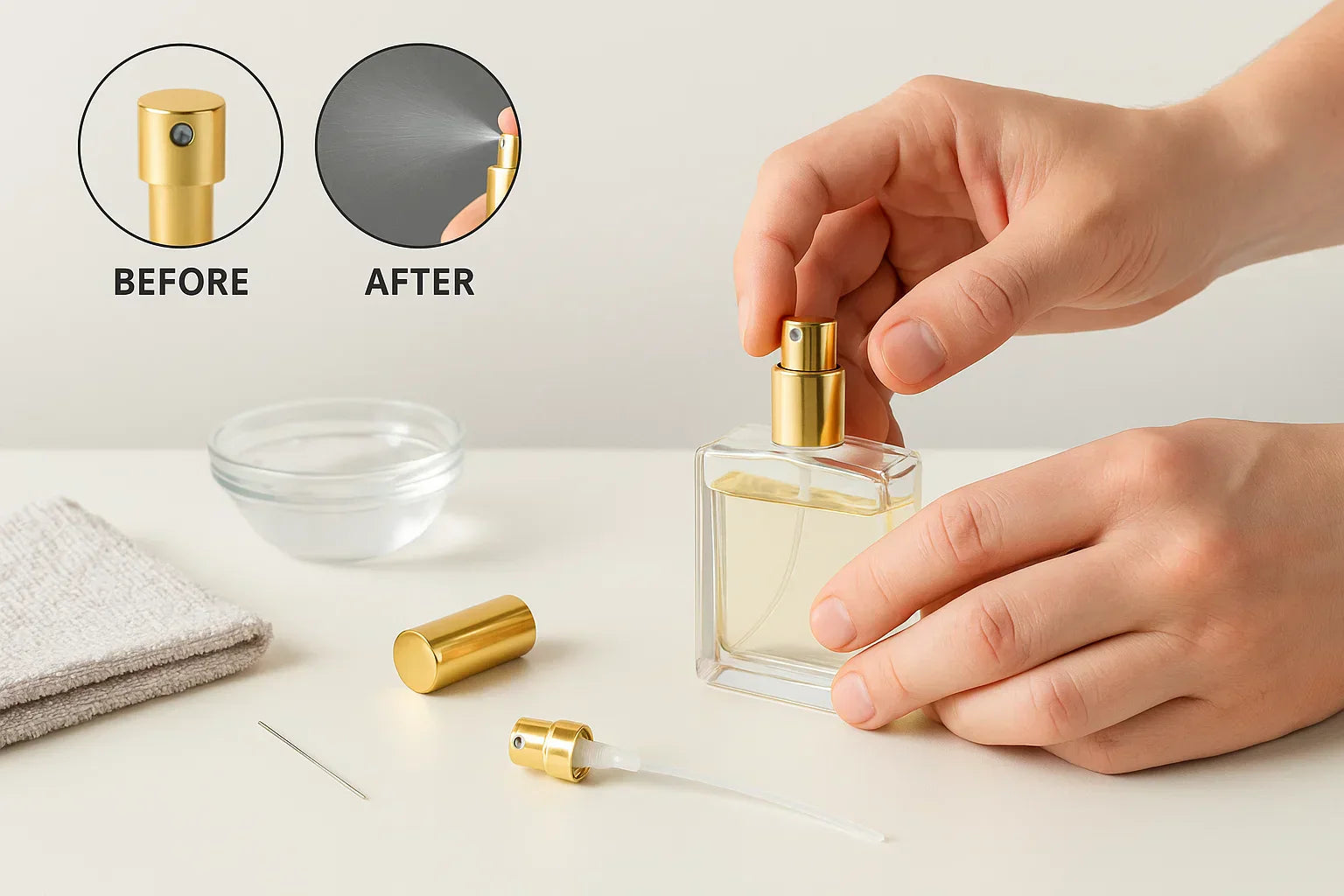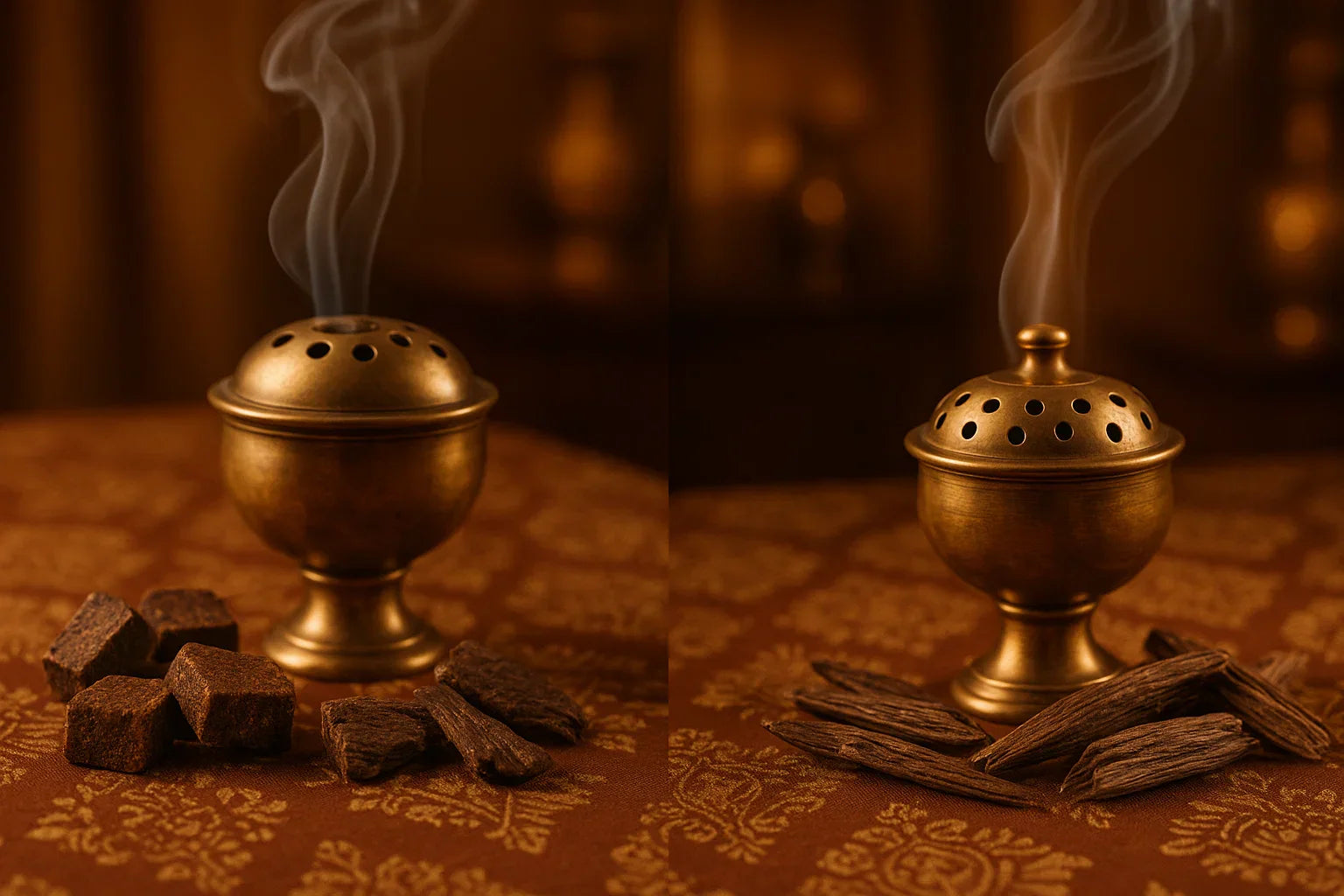
How to Identify Perfume Notes: Master the Art of Scent Recognition
Introduction
Struggling to understand what you're smelling when you spray a new fragrance? You're not alone—most perfume lovers can't identify the individual notes in their favorite scents, missing out on the full olfactory experience. Without this knowledge, you're essentially blind to the artistry behind each bottle, unable to communicate your preferences or find your signature scent. This comprehensive guide reveals exactly how to identify perfume notes like a trained perfumer, transforming your fragrance journey from guesswork into genuine expertise.
What Are Perfume Notes?
Perfume notes are the individual aromatic ingredients that create a fragrance's unique character. Think of them as musical notes in a symphony—each one plays a distinct role, but together they create something harmonious and memorable.
When you learn how to identify perfume notes, you're essentially decoding the perfumer's artistic vision. Every fragrance contains multiple notes that reveal themselves at different times, creating an evolving scent experience from the first spray to the final dry-down.
Why Note Identification Matters
Understanding perfume composition helps you:
- Articulate your preferences clearly when shopping for fragrances
- Avoid disappointing purchases by recognizing notes you dislike
- Discover new scents within your favorite fragrance families
- Appreciate the craftsmanship behind luxury perfumes
- Build a cohesive fragrance wardrobe that complements your style
Understanding the Fragrance Pyramid
The fragrance pyramid is your roadmap for learning how to identify perfume notes. This three-tiered structure explains why perfumes smell different over time.
Top Notes (Head Notes)
Duration: 5-15 minutes
Top notes are the first impression—light, volatile, and fleeting. These bright, attention-grabbing scents evaporate quickly but set the stage for what's to come.
Common Top Notes:
- Citrus: bergamot, lemon, orange, grapefruit
- Herbs: basil, mint, lavender
- Light fruits: apple, pear, berries
Recognition Tip: Top notes hit your nose immediately upon spraying and feel fresh, clean, or zesty.
Middle Notes (Heart Notes)
Duration: 2-4 hours
The heart of the fragrance emerges once top notes fade. These notes form the perfume's core character and are more rounded and complex.
Common Middle Notes:
- Florals: rose, jasmine, lily, ylang-ylang
- Spices: cinnamon, cardamom, nutmeg
- Green notes: violet leaf, geranium
Recognition Tip: Heart notes appear softer than top notes but more prominent than base notes, creating the fragrance's personality.
Base Notes (Dry-Down)
Duration: 4-8+ hours
Base notes provide depth, longevity, and foundation. These rich, heavy ingredients anchor the entire composition and linger on your skin for hours.
Common Base Notes:
- Woods: sandalwood, cedarwood, oud
- Resins: amber, benzoin, frankincense
- Animalics: musk, ambergris
- Vanillas: vanilla, tonka bean
Recognition Tip: Base notes feel warm, deep, and comforting—they're the scent that remains on your clothes the next day.
How to Train Your Nose for Note Recognition
Olfactory training is essential when learning how to identify perfume notes. Your sense of smell is trainable—like a muscle that strengthens with practice.
The 21-Day Scent Training Method
Week 1: Basic Scent Families
- Day 1-3: Study citrus (lemon, bergamot, orange)
- Day 4-5: Explore florals (rose, jasmine)
- Day 6-7: Experience woods (sandalwood, cedar)
Week 2: Complex Notes
- Day 8-10: Investigate spices (cinnamon, clove, cardamom)
- Day 11-12: Analyze resins (frankincense, benzoin)
- Day 13-14: Examine animalics (musk, amber)
Week 3: Advanced Recognition
- Day 15-17: Combine notes mentally
- Day 18-19: Practice blind smell tests
- Day 20-21: Test on full fragrances
Creating Your Scent Library
Build a personal reference collection:
- Gather raw materials - essential oils, spices from your kitchen, flowers from your garden
- Label everything - always know what you're smelling
- Smell mindfully - take 3-5 slow, deep breaths for each scent
- Take notes - describe what you smell in your own words
- Review regularly - smell your collection 2-3 times per week
Mindful Smelling Technique
- Reset your nose between scents by smelling your arm or coffee beans
- Hold the fragrance 6-8 inches from your nose
- Wave your hand over the bottle to bring scent molecules toward you
- Inhale slowly through your nose
- Exhale through your mouth
- Wait 30 seconds before smelling again
Step-by-Step Guide to Identifying Notes
Follow this proven process to identify notes in any perfume:
Step 1: Initial Spray (0-5 Minutes)
What to do:
- Spray on a test strip or your wrist
- Immediately smell to catch top notes
- Note your first impression
What to identify:
- Bright citrus elements
- Fresh herbal accords
- Light fruity touches
- Initial intensity level
Ask yourself: Does it smell fresh? Bright? Sharp? Fruity?
Step 2: Development Phase (15-30 Minutes)
What to do:
- Allow the fragrance to warm on your skin
- Smell every 5 minutes
- Notice the transition from top to heart notes
What to identify:
- Emerging floral bouquets
- Spicy warmth developing
- Softening of initial brightness
- Depth increasing
Ask yourself: What new scents are appearing? What's fading?
Step 3: Heart Reveal (1-2 Hours)
What to do:
- Observe the full heart note expression
- Compare the scent to your initial impression
- Identify dominant middle notes
What to identify:
- Primary floral varieties
- Spice characteristics
- Green or aquatic elements
- Overall character
Ask yourself: What defines this fragrance? What's the main story?
Step 4: Dry-Down Analysis (4+ Hours)
What to do:
- Smell your skin after several hours
- Note the base notes that remain
- Assess longevity and projection
What to identify:
- Woody foundations
- Resinous warmth
- Vanilla or sweet elements
- Musky undertones
Ask yourself: What lingers? What's the lasting impression?
Common Perfume Notes and Their Characteristics
Mastering how to identify perfume notes requires familiarity with common ingredients. Here's your reference guide:
Citrus Notes
Bergamot: Bright, slightly bitter, Earl Grey tea-like
Lemon: Sharp, clean, acidic, refreshing
Orange: Sweet, juicy, cheerful, warm
Grapefruit: Tangy, bitter-sweet, energizing
Floral Notes
Rose: Classic, romantic, sometimes powdery or green
Jasmine: Heady, sweet, slightly indolic, intoxicating
Lavender: Herbal, clean, soothing, aromatic
Ylang-Ylang: Creamy, tropical, banana-like sweetness
Woody Notes
Sandalwood: Creamy, smooth, milky, warm
Cedarwood: Dry, pencil-shaving, clean, grounding
Oud: Rich, animalic, intense, medicinal
Vetiver: Earthy, smoky, green, rooty
Spicy Notes
Cinnamon: Warm, sweet, spicy, comforting
Cardamom: Cool-spicy, green, eucalyptus-like
Clove: Sharp, medicinal, numbing, warm
Pink Pepper: Fizzy, rosy, bright, piquant
Oriental Notes
Vanilla: Sweet, creamy, comforting, gourmand
Amber: Warm, resinous, honey-like, powdery
Tonka Bean: Almond-like, coumarin, hay-like, sweet
Benzoin: Balsamic, vanilla-like, caramelized
Fresh Notes
Marine: Ozonic, salty, aquatic, clean
Green: Grass-like, crushed leaves, fresh-cut stems
Aquatic: Water-like, transparent, melon-like
Tools and Techniques for Better Identification
Enhance your ability to identify perfume notes with these professional techniques:
Essential Tools
Perfume Testing Strips
- Use quality mouillettes for consistent testing
- Label immediately after spraying
- Keep strips separate to avoid cross-contamination
Scent Wheel
- Visual reference for fragrance families
- Helps categorize unfamiliar notes
- Available as apps or printed guides
Fragrance Journal
- Document every perfume you test
- Note date, time of day, and weather conditions
- Record your impressions at different stages
Essential Oil Collection
- Start with 10-15 basic notes
- Pure ingredients help train accuracy
- Use as reference when identifying perfumes
Advanced Identification Techniques
The Layering Method Test notes individually, then combined:
- Spray each note on separate strips
- Hold strips together to simulate blending
- Compare to the actual perfume
The Subtraction Technique Identify what's missing:
- List all notes you can detect
- Compare to the official note list
- Focus on identifying the missing notes
Temperature Testing Fragrance changes with temperature:
- Test in morning (cooler) vs. afternoon (warmer)
- Notice how heat amplifies certain notes
- Understand how your body chemistry affects projection
Side-by-Side Comparison Build scent memory through contrast:
- Test similar fragrances simultaneously
- Identify subtle differences
- Train your nose to detect nuances
Common Mistakes to Avoid
Even experienced enthusiasts make these errors when learning how to identify perfume notes:
Mistake 1: Smelling Too Many Fragrances at Once
The Problem: Olfactory fatigue sets in after 3-5 scents
The Solution: Limit testing sessions to 4-6 perfumes maximum, with breaks between each
Mistake 2: Not Waiting for Development
The Problem: Judging a fragrance within the first 30 seconds
The Solution: Wait at least 15 minutes before forming an opinion; test over 4-6 hours for full evaluation
Mistake 3: Ignoring Skin Chemistry
The Problem: Expecting perfumes to smell identical on everyone
The Solution: Always test on your skin; pH levels, moisture, and natural oils affect scent development
Mistake 4: Relying Only on Marketing Descriptions
The Problem: Note lists can be incomplete or misleading
The Solution: Trust your nose first, then compare to official notes
Mistake 5: Skipping the Dry-Down
The Problem: Missing the true character revealed in base notes
The Solution: Wear the fragrance for an entire day before purchasing
Mistake 6: Testing on Wrong Areas
The Problem: Spraying on clothes or rubbing wrists together
The Solution: Spray on pulse points (wrist, neck) and let air-dry naturally; friction crushes molecules and alters the scent
Advanced Tips for Scent Analysis
Take your note identification skills to the professional level:
Understanding Accords
Accords are combinations of notes that create a unified impression:
- Fougère Accord: Lavender + oakmoss + coumarin
- Chypre Accord: Bergamot + rose/jasmine + oakmoss + patchouli
- Oriental Accord: Vanilla + amber + resins + spices
Tip: Learn to recognize these classic structures within modern fragrances
Detecting Synthetic vs. Natural
Natural notes tend to be:
- More complex and multifaceted
- Slightly inconsistent batch-to-batch
- Softer and more nuanced
Synthetic notes are often:
- Sharper and more linear
- Consistent and powerful
- Longer-lasting and more stable
Context Matters
Your ability to identify perfume notes improves when you consider:
- Season: Warmth amplifies certain notes
- Time of day: Morning vs. evening affects perception
- Emotional state: Mood influences scent interpretation
- Food consumed: Recent meals can affect olfactory accuracy
Building Fragrance Associations
Create mental connections:
- Rose = specific flower from your garden
- Vanilla = particular brand of extract you use
- Sandalwood = incense from your favorite shop
These personal references make abstract notes tangible and memorable.
Conclusion
Learning how to identify perfume notes transforms your relationship with fragrance from casual appreciation to true connoisseurship. By understanding the fragrance pyramid, training your nose consistently, and using proper testing techniques, you'll soon recognize individual notes as easily as distinguishing instruments in an orchestra.
Start your journey today by selecting one perfume from your collection and applying the step-by-step identification process. Practice daily, be patient with yourself, and remember—every expert perfumer once stood exactly where you are now.
Ready to deepen your fragrance knowledge? Explore our complete collection at Wani Perfumes and put your new skills to the test with our curated selection of Middle Eastern and international perfumes.
Frequently Asked Questions
How long does it take to learn to identify perfume notes?
Most people can identify basic notes within 2-3 weeks of consistent practice. Mastering subtle nuances and complex accords typically requires 3-6 months of regular training.
Can anyone learn to identify perfume notes?
Yes, unless you have anosmia (smell blindness), you can train your nose to identify notes. Like learning an instrument, it requires practice, patience, and consistent exposure to different scents.
Do I need expensive tools to start?
No. Begin with scents you already have—spices, fruits, flowers from your environment. As you progress, invest in basic essential oils and fragrance testing strips for more precise training.
Why do some notes smell different to different people?
Olfactory perception is partly subjective and influenced by genetics, cultural background, personal experiences, and individual scent associations. Additionally, skin chemistry alters how fragrances develop.
Should I test perfumes on skin or paper?
Both. Paper strips show the perfume's true composition without skin chemistry interference. Skin testing reveals how the fragrance will actually smell on you. Always do both for comprehensive evaluation.








